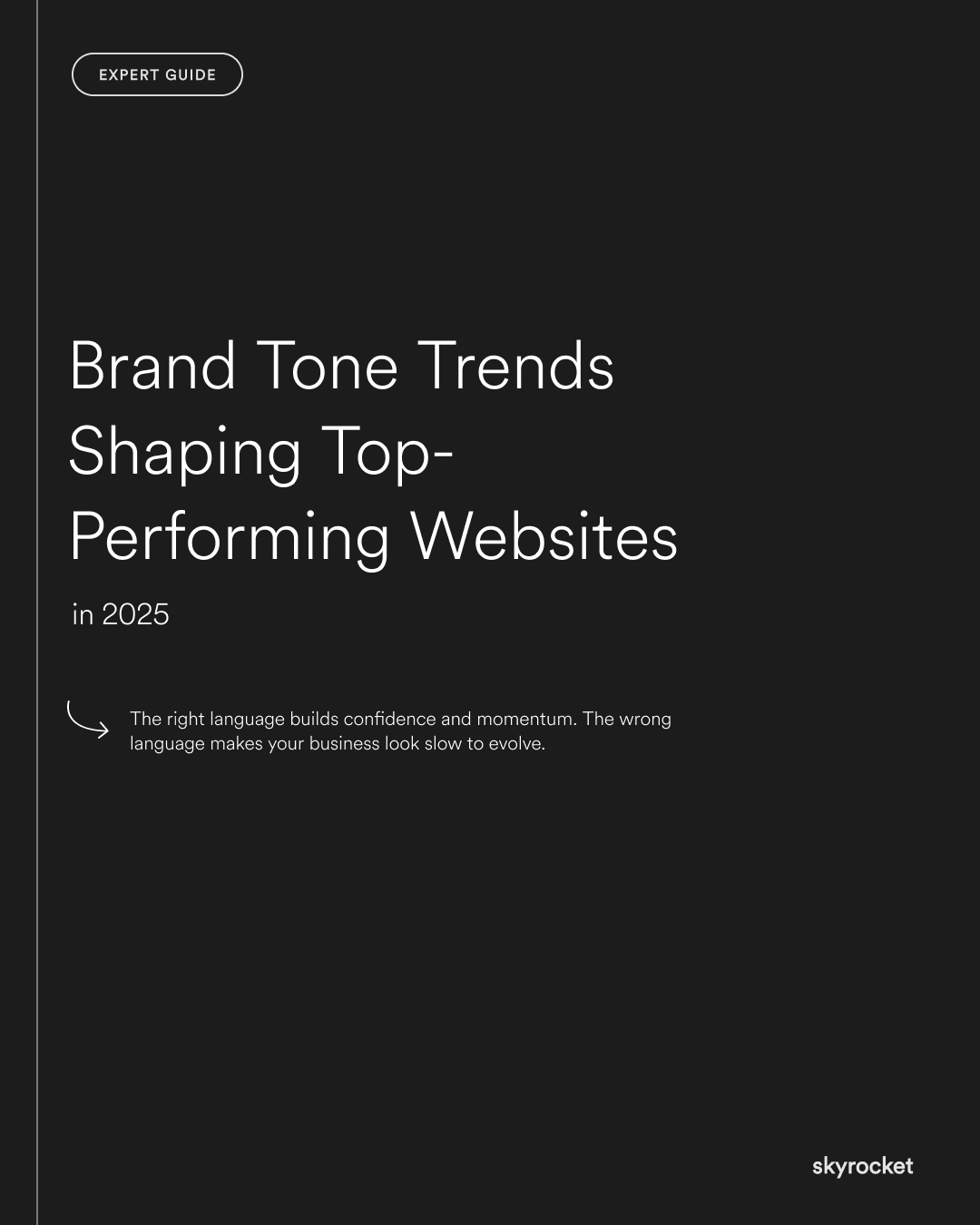Think about the last time you landed on a company’s website. Did the words make you want to keep reading, or did they feel flat, generic, or hard to trust? For B2B and service businesses, website tone is often the deciding factor between a visitor booking a call and a visitor leaving without action.
The problem is that many websites still speak in ways that worked five or ten years ago. Buyers today are exposed to thousands of messages each week. They can spot fluff instantly, and they are quick to leave if a site feels outdated, insincere, or unclear.
Tone is not just a branding exercise. It is a direct driver of sales, trust, and growth. The right language builds confidence and momentum. The wrong language makes your business look slow to evolve.
This guide will walk you through the brand tone trends showing up across the best-performing websites of 2025, why they matter for revenue and reputation, and how you can apply them on your own site.
Why Brand Tone Matters for Sales and Growth
Strong tone and voice are not cosmetic. They play into core business outcomes:
- Sales: Tone shapes whether buyers see you as approachable, credible, and worth their time.
- Growth: The right voice makes it easier to expand into new markets by sounding relevant and contemporary.
- Trust: A consistent tone signals professionalism. Buyers want to feel they are in safe hands before they sign a contract.
- Efficiency: Clear, human tone means fewer questions and smoother sales conversations. It saves your team time.
When the words on your website sound out of step with buyer expectations, conversions suffer.
Key Tip: Buyers want expertise, but they reject arrogance. In 2025, the best-performing sites know that humility plus proof creates more trust than bold claims alone.
For example:
- Instead of: “We are the undisputed leader in enterprise solutions.”
- Use: “Trusted by over 500 businesses to simplify complex workflows.”
The second line shows authority while still sounding approachable.
The Emerging Brand Tone Trends of 2025
Here are the tone shifts making the biggest impact across top-performing websites this year.
1. Clarity Over Complexity
Many industries still lean on technical jargon. But top sites now strip away complexity. They speak in plain English, even in technical fields.
- Old approach: “Delivering scalable, enterprise-grade solutions for mission-critical systems.”
- 2025 approach: “We keep your systems secure and running smoothly, no matter the size of your business.”
Clarity respects the reader’s time and shows confidence in your offer.
2. Conversational Yet Professional
The stiff, corporate voice is disappearing. The best sites sound like a knowledgeable colleague, not a legal contract.
- Use “you” and “we” to create connection.
- Shorten sentences. Avoid endless paragraphs.
- Drop filler phrases like “in order to” or “at this point in time.”
This conversational-professional balance makes your site feel approachable while still trustworthy.
3. Proof-Driven Language
Buyers in 2025 are sceptical of generic claims. They want proof.
- Swap “industry-leading” for “used by 3 of the top 5 banks in NZ.”
- Replace “boosts efficiency” with “cuts processing time by 27 percent.”
- Showcase short client quotes that reflect real outcomes.
Proof builds authority faster than adjectives ever could.
4. Inclusive and Human
Modern buyers expect inclusivity and human-centred tone. Sites that sound elitist or exclusive risk alienating audiences.
- Avoid language that implies gatekeeping, like “only the best companies qualify.”
- Use collaborative framing: “We work with your team to get results that last.”
- Show empathy by acknowledging challenges rather than glossing over them.
This approach makes businesses sound people-focused, not product-obsessed.
5. Future-Focused but Grounded
Many 2025 websites are future-facing, but they keep language grounded in present outcomes. They balance vision with practicality.
- Old: “Redefining the future of digital transformation.”
- New: “Helping teams today while preparing them for what’s next.”
Grounded optimism reassures buyers you can deliver results now, not just someday.
Real-World Example: The Over-Polished Tech Site
A mid-sized software company had a homepage headline that read: “Pioneering holistic, scalable frameworks for digital-first enterprises.”
It looked impressive, but conversions were low. Buyers felt lost.
After revising to: “We help healthcare teams cut admin time with secure automation tools,” leads increased by 35 percent within two months. The difference was tone. Clarity and warmth replaced jargon and posturing.
Practical Ways to Apply These Trends
Here’s how you can put these tone lessons into practice.
Audit Your Homepage Headline
Your homepage headline is the most valuable real estate on your site. Does it state clearly what you do and who you help?
- Weak: “Innovative solutions for modern business.”
- Strong: “Accounting tools that save small NZ businesses hours every week.”
Review for Fluff and Buzzwords
Look for overused words like “innovative,” “tailored,” or “cutting-edge.” Replace them with specifics.
- Instead of “cutting-edge software,” write “software used by 2,000 NZ businesses.”
Match Sales Language
Align your website tone with what your sales team actually says. If the sales team always talks about “saving time and reducing headaches,” make sure that phrasing appears on the site.
Simplify Calls to Action
Your CTAs should reflect the approachable tone.
- Avoid: “Submit request for proposal.”
- Use: “Book a quick call” or “Get your free demo.”
Common Objections About Changing Website Tone
“Our clients expect formality.”
Professional does not need to mean formal. Clear, human tone works even in conservative industries. A partner at a law firm may prefer straightforward confidence over stiff formality.
“Tone does not affect conversions.”
Tone directly influences trust, which influences conversions. Buyers are more likely to take the next step when a site feels relevant and human.
“We just need to add more buzzwords.”
Buzzwords no longer build credibility. They signal laziness. Buyers are quick to dismiss copy that feels like it was written to impress rather than to help.
What to Do Now: Quick Action Checklist
Here are five actions you can take this week to improve your brand tone:
- Rewrite your homepage headline. Make sure it clearly states who you help and how.
- Cut vague claims. Replace them with proof, numbers, or customer outcomes.
- Simplify language. Use short sentences and everyday words.
- Check alignment. Compare your website tone with sales conversations.
- Test one page. Update the tone on a key page, then measure changes in engagement or conversions.
Tone is not a soft branding choice. It is a hard business lever. The language you use can either position you as a trustworthy partner or make you sound outdated.
The best-performing websites of 2025 are embracing clarity, warmth, and proof. They sound human, they build trust, and they focus on outcomes. The good news is that you do not need a full redesign to make progress. Changing tone costs less than new design work and can deliver immediate results.
If you would like expert support aligning your website tone with buyer expectations, you are welcome to reach out. Sometimes an outside perspective makes it easier to see what your audience needs to hear.



